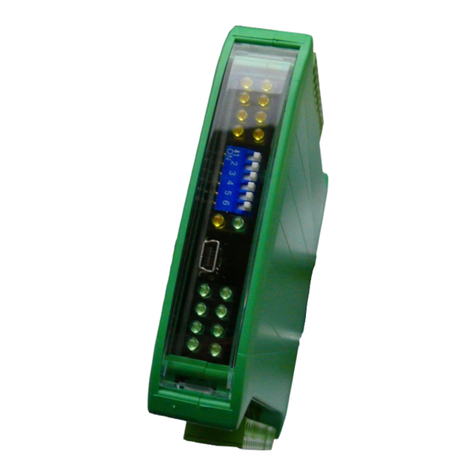SDM-8AI
User Manual
3. Communication configuration
3.1. Grounding and shielding
In most cases, IO modules will be installed in an enclosure along with other devices
which generate electromagnetic radiation. Examples of these devices are relays and
contactors, transformers, motor controllers etc. This electromagnetic radiation can
induce electrical noise into both power and signal lines, as well as direct radiation into
the module causing negative effects on the system. Appropriate grounding, shielding
and other protective steps should be taken at the installation stage to prevent these
effects. These protective steps include control cabinet grounding, module grounding,
cable shield grounding, protective elements for electromagnetic switching devices,
correct wiring as well as consideration of cable types and their cross sections.
3.2. Network Termination
Transmission line effects often present a problem on data communication networks.
These problems include reflections and signal attenuation.
To eliminate the presence of reflections from the end of the cable, the cable must be
terminated at both ends with a resistor across the line equal to its characteristic
impedance. Both ends must be terminated since the direction of propagation is bi-
directional. In the case of an RS485 twisted pair cable this termination is typically
120 Ω.
3.3. Setting Module ddress in RS485 Modbus Network
The following table shows how to set switch to determine the address of the module.
The module address is set with the switches in the range of 0 to 127. Addresses From
128 to 255 can by set via RS485 or USB.
Switch Address
SW1 +1
SW2 +2
SW3 +4
SW4 +8
SW5 +16
SW6 +32
SW7 +64
Ex. if switches 1, 3 and 5 are on than module addres is:
Address = 1 + 4 + 16 = 21
Expansion Module – 8 analog inputs
User Manual Version 1.2 6 / 18




























